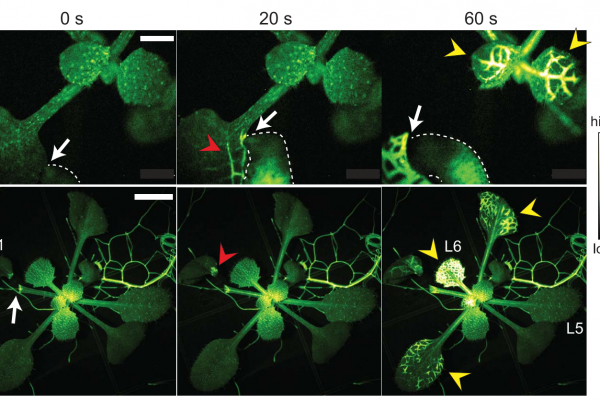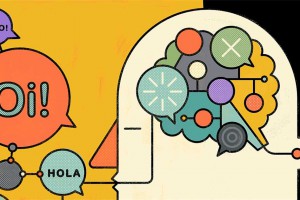Although plants do not have a specific nervous system like animals, the presence of some similar biomolecules and the ability to transmit messages between cells has made scientists to conduct further research in order to find the answer of this question. Glutamate (Glu) which is a neurotransmitter in animals’ nervous system is also present in plants and can act as a long-distance signaling transducer among cells, tissues, organs, and even the whole plants by the crosstalk with Ca2+, ROS, and electrical signaling. Glu has also been proposed as one of the plant damage–associated molecular patterns (DAMPs), either leaking from damaged cells or actively released upon wounding. Numerous studies have showed that Glu usually exerts signaling role by its receptors, that is, glutamate receptors (GLRs), similar to iGluRs in animals. In addition to their similar secondary structures, the Arabidopsis GLRs also share extensive sequence identity with animal ionotropic GluRs. GLR-related genes also seem to exist in a variety of higher plants, including both dicotyledons (tobacco and pea) and monocotyledons (rice and maize).Several classical ionotropic GluR agonists that activate and define specific ionotropic GluR subtypes in brains are natural plant products. It is traditionally believed that plants produce such neurotoxins for defence against herbivory. However, the discovery of putative ionotropic GluRs in plants and their possible role in light-signal transduction suggest an alternative theory: that plants may synthesize ionotropic GluR agonists in order to regulate their endogenous ionotropic GluR receptors, and that selective pressure in certain species then led to high-level production for defence against herbivores. GLRs are related to ionotropic glutamate receptors (iGluRs) that are important for fast excitatory synaptic transmission in the vertebrate nervous system. They and their plant relatives may control signalling mechanisms that existed before the divergence of animals. and plants. If so, a deeply conserved function for these genes might be to link damage perception to distal protective responses.
Here we asked how GLRs are triggered by wounding and how subsequent Ca2+-related signaling events operate to mediate systemic defense. Pre-treating the petiole of the wounded leaf with the Ca2+ channel inhibitor prevented both export of the [Ca2+]cyt increase and systemic induction of wound-related marker genes, suggesting that propagation of the [Ca2+]cyt change is required for induction of systemic responses. Rapid propagation of systemic electrical signals depends upon GLR ion channel family members GLR3.3 and GLR3.6; glr3.3 and glr3.6 single mutants showed altered kinetics of the propagating [Ca2+]cyt signal, with glr3.6 exhibiting the most severe reduction. To determine whether apoplastic Glu concentration ([Glu]apo) was increased by wounding, researchers targeted the GFP-based Glu sensor iGluSnFR to the cell wall. Upon wounding, the iGluSnFR signal increased locally at the cut region, mirroring [Ca2+]cyt dynamics at this site. With greater leaf damage (hemostat crushing), Glu release to the apoplast was more extensive and more distal leaves showed changes in [Ca2+]cyt. Thus, the plant could tailor the extent of its systemic defense response to the severity of damage, possibly by adjusting [Glu]apo produced at the wound site. Mounting evidences have found that Glu is a novel signaling molecule, which is involved in many other physiological processes as well. These processes include seed germination, seedling establishment, plant growth, development, senescence, and even response and adaptation to environmental stress, such as salt, cold, heat, drought, wound, and pathogen stress.
Although there is still a long way left to find enough similarities to prove the existence of a very primitive nervous system in plants, the mentioned study is considered an important step in advancing research in this direction.





Related Posts